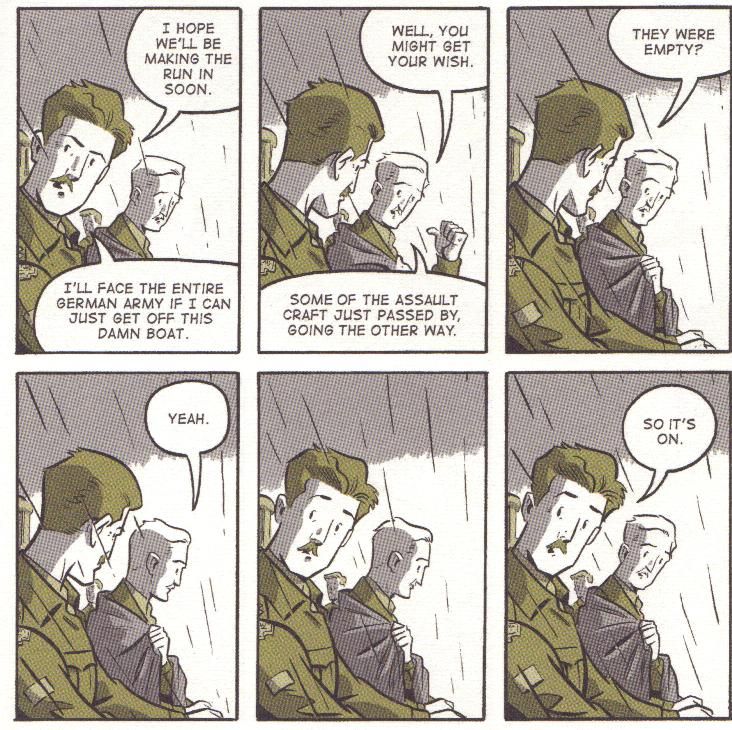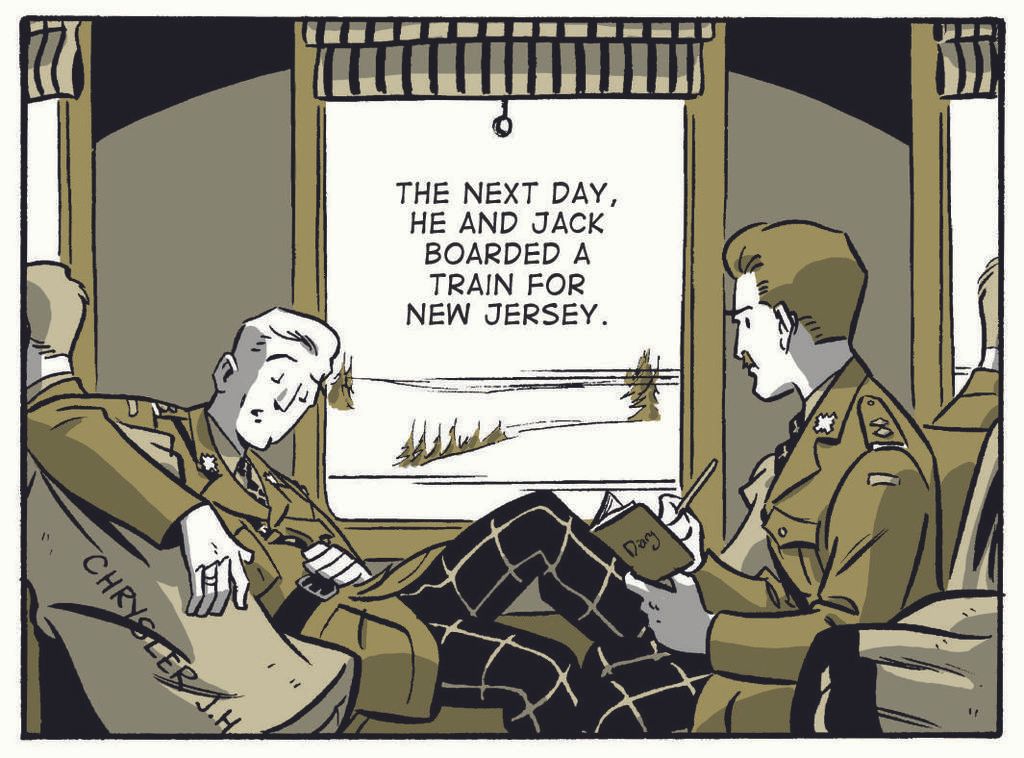In Remembrance of D-Day: Two Generals [Graphic Novel] Review
![In Remembrance of D-Day: Two Generals [Graphic Novel] Review](/content/images/size/w1200/2016/06/20774551382b256206c7a2dd47a09a06--1-.jpg)
A friend of mine gifted me this book, a few years back, during our yearly Secret Santa exchange. It is, easily, one of the most moving and spot on presents that I've received, as my friend knows that (1) I'm a Veteran, (2) I love comics/graphic novels that depict true to life scenarios especially that of historical battles/military history, and (3) I love to learn something new during my reading. I read Two Generals when I first received it, but revisited it last week, on a drive home from Orlando on Memorial Day.
Two Generals, by Scott Chantler, is a true story about the author's grandfather, Law Chantler, and his grandfather's best friend, Jack Chrysler. Both men served with the Highland Light Infantry (HLI) of Canada and participated in the Allied Invasion of Normandy during World War II. The narrative takes us from Canada to New Jersey to England and then onto the battlefields of France. While you'll find the occasional witty anecdote, that every service member has, the main focus is on both men's wartime experiences. The source material includes Law's journal (1943) and Jack's letters (1944) to his wife. To help fill in the holes, Chantler was able to piece together a timeline from the HLI's War Diary.
Upon the start of my read, I was immediately drawn to the art work, specifically, the choice of colors. From that, alone, I immediately felt that this would be a somber tale. Greens, grays, white, and darker blues set the tone, and I thought the use of red was clever, in regards to highlighting death and violence throughout the book. As for the packaging of the book, itself, in physical form, it's nothing like any other graphic novels in my collection. The title and author's name are embossed on the front, while the hardcover sports an elastic band that wraps around it, just like you would have for a Moleskine diary or journal. Seriously, it's beautiful and totally adds to the aesthetic.
I wanted to share my love of this book today, as it is the 72nd Anniversary of the Allied Invasion of Normandy, and there's something to be said about a, mostly, untold story from the greatest strategic military operation, in my opinion, of all time. I highly suggest reading this when you have peace and quiet, where you can take it all in. It is an emotionally jarring write, especially for those of us who have served, at any time, or those who have family members who were in the military past or presently.
Of the story, it felt like you were right there, along for the journey, with Law and Jack. I, especially, loved how well the book was paced as though Chantler didn't want to rush you and give you a moment to express reverence before moving on. Additionally, it was like anything in life where you have no words for what you are seeing. Chantler used silence, amid the back drop of war, as a tool to paint an incredibly vivid picture.
As I said before, and if you know me in general, I'm a lover of history, especially that of World of War II, the American Revolution, the Tudor/War of the Roses era of England, and a few other topics. As someone who was in the U.S. Navy myself, I constantly see remembrances for all the American casualties, of which there are thousands, and rightly so. However, D-Day would not have been a success if not for the sacrifices not only of the Americans, but of every single country within the coalition. While the majority of troops who landed on D-Day beaches were from the United Kingdom, Canada, and the U.S., different armed services of Australia, Belgium, Czechoslovakia, France, Greece, the Netherlands, New Zealand, and Poland also participated. I'm always interested in reading and learning from other perspectives, especially those, like that of Canadians who fought during WWII, whom are underrepresented. Two Generals gave that to me in droves.

To give an idea with numbers, around 156,000 troops landed in Normandy from the U.S., U.K., and Canada. Apologies, as I don't have the numbers of the other countries.
Americans landed 73,000
- 23,250 on Utah Beach
- 34,250 on Omaha Beach
- 15,500 Airborne
U.K. & Canada landed 83,115 (with 61,715 of them British)
- 24,970 on Gold Beach
- 21,400 on Juno Beach
- 28,845 on Sword Beach
- 7,900 Airbone
Aircraft
- 11,590 aircraft supported flying 14,674 sorties with a loss of 127
Naval Forces of Operation Neptune numbered 195,700
-
52,889 U.S.
-
112,824 British
-
4,988 of other Allied nations aboard
-
1,213 naval combat ships
-
4,126 landing ships & craft
-
736 ancillary craft
-
864 merchant vessels
By the end of June 11th (D + 5), 326,547 troops, 54,186 vehicles, and 104,428 tons of supplies had landed upon the beaches of Normandy.
As for casualties, there is no "official" casualty figure for D-Day. Given the circumstances, accurate record keeping was difficult and some figures only include one branch, such as the Army, but could leave out Navy and Air Force personnel. However, right now, it is known that over 209,000 Allies were casualties either killed, wounded or missing in action. This includes:
- nearly 37,000 ground forces
- 16,714 Allied air forces
Of the Allied casualties,
- 83,045 were of the 21st Army Group (British, Canadian, and Polish ground forces)
- 125,847 of U.S. ground forces
27 war cemeteries hold the remains of over 110,000 from both sides. Many American casualties were moved back to the U.S. and reburied here.
Credit to D-Day Museum, Portsmouth, England for the facts and figures
